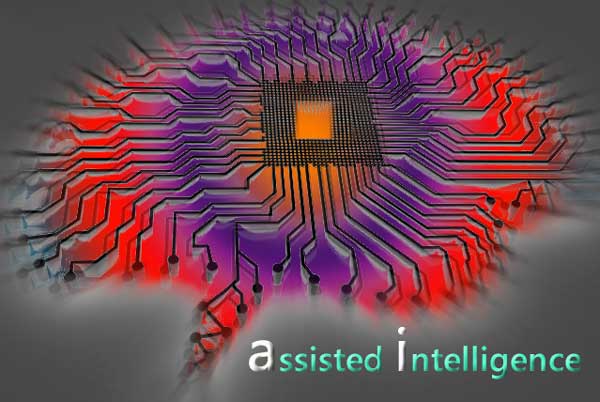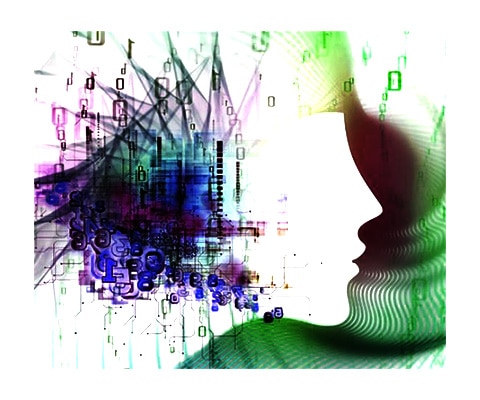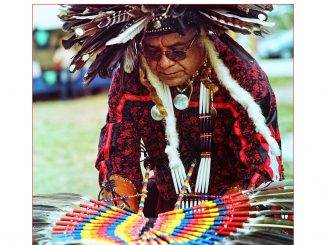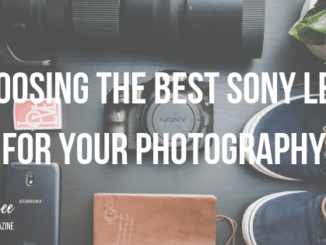
What About Smart Cameras?
We all know about smart cars and smartphones. But what about smart cameras? We don’t often call them that, perhaps because we feel, compared to smart camera phones, that larger cameras have been getting smarter at a snail’s pace. Well, not anymore. Assisted intelligence has arrived.
For example, NVIDIA now has a “smart paintbrush,” a tool for taking basic sketches and turning them into photo-realistic landscape images. While it exists as a demonstration and an academic hard copy paper, the NVIDIA app will grow faster than we can imagine.
Algorithms are no longer in a childlike stage but are like fast-growing teen-agers with brains that are thinking deeper thoughts. Today, AI technology is two main things: machine learning and machine vision. Its software is virtually sentient. It takes over repetitive tasks like tagging the “best” photos from your day’s shoot. While guiding us toward new horizons in photography, all this may make us wonder, where is the photographer in this AI world?
These programs, apps, and algorithms seem lik a natural part of the photo editing process when they are working in the background as assistants. Think of them as Augmented Intelligence, and Assisted Intelligence, as well as Artificial Intelligence. By the end of 2019, given that algorithms are fully embedded into our cell phones, some form of Assisted Intelligence will be part of all cameras and camera-phone interfaces.
Assisted Intelligence (AI) Today
Assisted intelligence began with small steps. One of the first was an algorithm that let us float the ISO. This means the camera changes the ISO according to the aperture and shutter settings for the scene. Beyond floating ISO, there is a rapidly expanding series of programs for photographers: picture styles, depth sensing for soft backgrounds, wireless and blue-tooth camera controls, portrait modes, and real-time image scene recognition. While none of these programs and algorithms come close to the complex, evolved neural networks of our visual cortex, they promise to save time by taking over automatic functions in photography.
Five Examples of Emerging AI
With that said, we must think of these AI features as flexible. They are not alterations in the physics, chemistry or the optics of photography. Instead, these changes in programming, coding, searching, indexing and user interfaces are easily updated and patched into cameras.
Here are 5 examples of the ideas, companies, and editors in 2019 for AI:
1. Deep Learning
A company called Meero makes photographs for real estate, food, and commercial uses. They developed a cutting-edge algorithm, inspired by how the human brain works. Can an algorithm perform as well as a professional photographer when executing an aesthetic, nuanced, complex task? Meero thinks it can. They propose that gradient-based learning is the solution.
In their software, they use a deep neural network they believe mimics the way the brain works. It makes use of the errors the network’s neurons output and then computes its gradient using convex optimization methods. They draw from 25 million photographs in their database. By then, using the chain-rule to correct errors from the end to the beginning of the network, and repeating the operation millions of times, Meero’s proprietary deep learning algorithm performs as well or faster than a professional photographer, they say. The goal is to enhance photographs for commercial sale.
2. Long Exposures
Arsenal is a smart camera assistant, essential a device you put atop your camera to set up your camera settings with your smartphone. It has many features such as time lapse, focus stacking, sharing to the web and remote release. Arsenal also allows long-exposure or time exposure photos without neutral density (ND) filters. This applies to images like softly blurring the motion of a waterfall.
3. Photo Editing: Skylum & Adobe
Our first of two editors is from Skylum. Skylum offers Photolemur and Luminar 3. Photolumur edits a picture automatically to get the “best” possible version. Luminar uses only one slider to automatically adjust contrast, tone, sharpness and reduce noise. These programs also add sun rays, enhance skies, and use just one slider to automatically improve a photo.
A second AI program, Adobe Sensei, does many things. To mention just one, Sensai lets you alter expression and perspective without distortion. For example, in a portrait the mouth can be changed from a frown to a smile. Eyes can be enlarged or reduced with just a click. If one person in a family portrait did not smile, Adobe Sensei can, with face recognition, add a touch of a smile. The software unifies machine learning and AI, so you can find specific images, such as a red bridge with a shallow depth of field. The program acts as a content assistant to find content with machine learning which improves its performance as it receives more information. For instance, tasks like cropping, tagging, and adding a folder of swatches can be automated by Adobe Sensei. The developers say that Adobe Sensei’s deep learning is loosely modeled on how brain neurons communicate with each other to score which images are best.
4. EyeEm Vision
EyeEm Vision is cutting edge AI. For each photo you take, the program automatically tags, captions and keywords your metadata so you can search it in your library. It even filters your photo library to rate all photographs as to how well they match your self-described style.

5. ON1 Photo Raw 2019
In this picture editor, the quick mask tool uses AI technology to easily help you select, fine tune, and apply a mask to your photograph. This saves time because the assistant does all the work selecting that was previously done by hand with Tools in a tools menu. For example, a washed out sky can be quickly selected and an colorful sky put in its place.
Summary
AI software developers are offering us methods to make our pictures look better. They also tell us that these AI programs will let us “make great images faster” and let “our pictures look the best without wasting time.”
The pace that AI software is merging with our cameras is faster than light. For some photographic tasks, training and knowledge are minimized, complexities and inconveniences are removed, and the AI software assistant performs tasks more rapidly than a human editor. Nothing can go wrong, right?
Well, think of autofocus. While it is faster than human focusing by hand in many situations, for some scenes and especially with lower end cameras, autofocus may still create problems, like hunting to lock in on focusing on an object in low light. Even given all the powerful tools of Assisted Intelligence, there will always be a place for well-trained, experienced photographers who understand how composition, color and moment work to capture peak emotion and a touch of humanity.





Leave a Reply